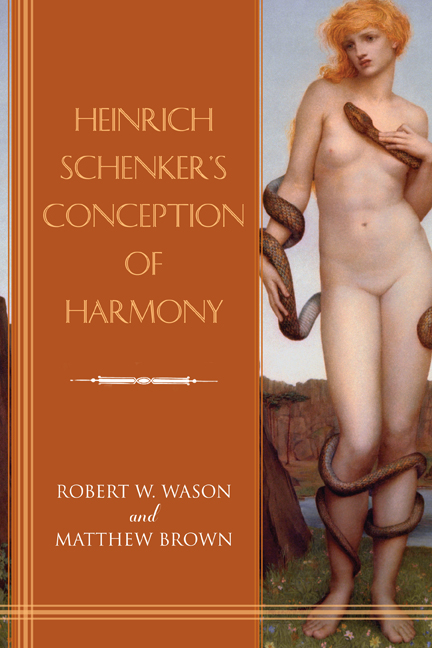3 - Schenker’s Theory of Harmony (1906) in Historical Perspective: The Theory of Harmony from the Ancient Greeks to the Early Nineteenth Century
Published online by Cambridge University Press: 14 October 2020
Summary
Sechter finally ascended to a position at the conservatory in 1851; very likely the Grundsätze emerged from his teaching there. When Schenker wrote his Theory of Harmony, he engaged the most important music-theoretical topic of the time. As one contemporary source made clear, it referred to:
the study of the meaning of harmonies (chords)—that is, the explanation of the mental processes of musical hearing. By classifying the various types of simultaneities, delineating their relationships to one another, and attempting as well to develop the natural laws of musical design—in particular those of harmonic structure—the theory of harmony cultivates the mental imaging of music in a systematic manner, and develops the capability of the mind to understand musical works more quickly as well as to think productively in tones.
The ambitious leap from the “meaning of harmonies (chords)” to “musical hearing” in this passage is striking. That leap and the further claim that “the theory of harmony cultivates the mental imaging of music” demonstrate that as early as the 1880s, the “scientific” aspirations of harmony that were often couched in language of the physical sciences in mid-century now could be found in language drawn from human psychology, the recently rising field vying for scientific status. At the beginning of his career, Schenker likewise believed that harmony was fundamentally a matter of psychology. But the notion that an artistic hearing of music could come down to a psychological processing of successions of surface “chords” was one he rejected entirely, right from the outset of his career.
The above definition also underscores the central position that harmony held in music theory throughout the late eighteenth and nineteenth centuries, when something like a “common practice” reigned—the “science of music,” many would have called it. Thus Schenker's entree into the field was a high-stakes gambit. But as the repertoire has aged and pressing music-theoretical problems of twentieth-century modernism have emerged, the theoretical treatise on (now “traditional”) harmony has appeared more rarely, so much so that today's English definition is purely practical: “the combining of notes simultaneously, to produce chords, and successively, to produce chord progressions.”
- Type
- Chapter
- Information
- Heinrich Schenker's Conception of Harmony , pp. 177 - 245Publisher: Boydell & BrewerPrint publication year: 2020



